Pocket pistols and pocket carry are controversial for some shooters who think smaller handguns just aren’t enough in terms of capacity and presentation. One of our raters is trained in public safety and feels that even well into retirement age, he should carry a handgun capable of taking on personal threats, gangs, and even active shooters with enough rounds of a suitable chambering like 9mm Luger or above. Another rater feels that the pocket 380 Auto is a great carry piece that goes anywhere, anytime without a lot of fuss. He states that situational awareness and avoidance have served him well, and he simply isn’t going to get into a situation that demands a larger gun.
Test guns that fill the bill for the second shooter’s needs are these two 380 Autos:
● Ruger LCP Max 75th Anniversary Stainless 13775, $299, and
● Smith & Wesson’s Bodyguard 2.0 13926, $440.
These micro 380 Auto pistols are great choices for those days when you don’t really want to carry a gun, such as on a Tuesday when you have a backache. Each is far smaller than the double-action-first-shot 380 Auto pistols typified by the Walther PPK or Beretta 84. Yet each features a generous magazine capacity and good reliability. Also, they are much easier to shoot well than the original 380 Auto Ruger LCP or Smith & Wesson Bodyguard.
Certainly, the newer guns address the first rule of personal defense, and that is to have a gun. They also allow the concealed-carry shooter to have a gun with minimal weight penalty, each pistol weighing around 10 ounces unloaded. Here’s what we thought about each one in more detail:
Smith & Wesson Bodyguard 2.0 13926 380 Auto
$440
Gun Tests grade: A- [OUR PICK]
The Bodyguard looks like a miniature Military & Police 9mm more than a purpose-designed pocket gun. It handles more like a big gun as well. We like the manual safety. The pistol is very well thought out. It is our choice between these two if price is not the most important criterion.
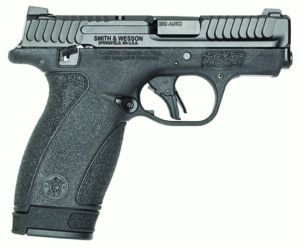
| Action S | emi-automatic, blowback, striker fired |
|---|---|
| Trigger | Single action |
| Overall Length | 5.5 in. |
| Overall Height | 4.0 in. |
| Maximum Width | 0.88 in. |
| Weight Unloaded | 10.0 oz. |
| Weight Loaded | 11.2 oz. |
| Barrel Length | 2.75 in. |
| Capacity | 10 or 12 rounds |
| Slide | Stainless steel, Armornite coating |
| Slide Retraction Effort | 12.0 lbs. |
| Frame | Polymer |
| Front Strap Height | 2.0 in. |
| Rear Strap Height | 2.6 in. |
| Grip | Pebbled rubber |
| Grip Thickness Maximum | 0.9 in. |
| Grip Circumference Maximum | 4.75 in. |
| Front Sight | Tritium white dot |
| Rear Sight | Fixed U notch |
| Trigger Pull Weight | 3.6 lbs. |
| Trigger Span | 2.5 in. |
| Magazines | (1) 10, (1) 12 |
| Magazine Cost | $38, 12 round |
| Warranty | Limited lifetime |
| Telephone | (800) 331-0852 |
| Website | Smith-Wesson.com |
| Made In | U.S. |
The Bodyguard 2.0 doesn’t resemble the double-action-only hammer-fired Bodyguard 380 at all, save for general size. The new Bodyguard is a miniaturized Military & Police 9mm in appearance. As small pistols go, the Bodyguard did not disappoint.
These pistols must be reliable. The piece should ride comfortably in the pocket and draw smoothly. We added the ability to speed load the pistol. Despite a generous magazine capacity of 12 rounds, the 380 Auto doesn’t have much power, and with limited wounding potential, multiple shots may be needed. If there is more than one adversary or threat, the odds really stack up against you. Most folks carrying a pocket pistol don’t carry a spare magazine. Just the same, we practiced firing with both magazines, extended and flush fit, and practiced speed loads.
The micro-type handgun must be taken into perspective. There is compromise in shooting form no matter the hand size. A fast and solid grip on the gun is part of the standard response to a threat. Delivering a center hit at 10 yards in 1.5 second is a challenge for the best shooters. Our shooters are experienced and chose to limit the center-hit test to 7 yards with these 380 Auto pistols, although half the raters proposed 5 yards.
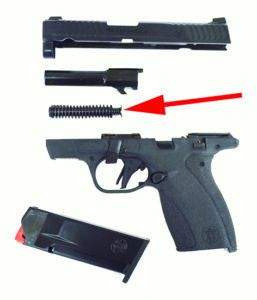
If a solid grip isn’t affirmed with the first shot, then follow-up shots are not going to be accurate and the pistol will squirm in the hand as you fire again. We placed a lot of emphasis on getting a good grip and getting fast follow-up shots during the test.
Typical micro pistols are usually boxy and far from ergonomic. Smith & Wesson has managed to combat this trend in the Bodyguard 2.0 with a pistol that complements a good shooter with good ergonomics and hand fit. The grip of the Bodyguard 2.0 is designed with a palm swell that accommodates a range of male and female hand sizes well. The palm swell is more in the middle of the grip frame, while many pistols flare toward the base. The grip leads to an extended grip tang. This grip tang/beavertail helps lead the hand into a firing grip and also helps control recoil. The hand rides closer to the slide than the Ruger (while the tang protects the web of the hand from the slide) and allows a locked wrist without a lot of effort and grip shifting. Grip texture isn’t overly aggressive because it is designed for pocket carry or under-the-shirt carry. Just the same, the balance of adhesion and abrasion is more than adequate, making for good purchase when firing.
We fired 160 rounds of full-power ammunition in each pistol. We never felt that the Smith & Wesson’s grip texture was digging into the palm, and on the other side of the coin, we never felt the pistol moving in the hand. The Ruger did not offer this level of confidence in the grip. It sometimes squirmed in the hand, despite a solid grip. The firing results were good, and the grip design is responsible for much of this. An undercut behind the trigger guard, normally found on larger pistols, also helped in getting a firm grip. Roughened pads above and beyond the trigger guard aid in safe trigger-finger placement in left- or right-hand use.
The 12-round magazine offered the best hand fit, while the pistol was controllable with the 10-round magazine. We addressed the difference between magazines in firing tests.
Our pistol is the manual-safety version. The safety is stiff going on, but not too stiff going off. This is ideal because you don’t want the safety moving to the Safe position as you are firing. The pistol may be loaded and unloaded with the lever on Safe. The Bodyguard 2.0 also features a blade-style safety lever in the trigger face. This safety lever is wide and flat. It would be difficult to miss. The manual safety locks the trigger. You don’t have to use the safety in carrying the Bodyguard 2.0, but some, including the raters, will prefer the safety. The safety is ambidextrous; the slide lock is not. While the safety lever is small, it is nicely checkered for easy manipulation. The magazine release is positive in operation and is shielded from inadvertent manipulation to some extent. The magazine release is reversible. The pistol gets high ratings on left-hand use as far as the safety, trigger action, grip, and reversible magazine release go.
Racking the slide of the Smith & Wesson is more difficult than the LCP Max, the price of reliability in a micro 380. The Bodyguard pistol is about 2 pounds heavier to rack according to scale. Aggressive cocking serrations make the Bodyguard 2.0 easy enough for most, but some may have difficulty with this slide.
The striker-fired system allows for a snag-free slide and relatively controllable trigger break. We like the trigger action better than the Ruger’s, but it is a close thing. The trigger action breaks at 3.6 pounds, the Ruger is at 4.15 pounds.
Each of the pistols features a serrated rear-sight face in a drift-adjustable rear sight. The dovetailed front sights of each pistol feature a tritium insert. The Ruger front sight is surrounded by a white outline, the Smith & Wesson has an orange outline. In side-by-side comparison in darkness, there was little difference, save for the Ruger’s tritium dot is slightly larger. The Ruger’s U-notch rear sight is tighter than the Smith & Wesson’s, so the Ruger may favor accuracy, while the Smith & Wesson favors speed. As it turned out, there was little difference between the two; however, some felt the Ruger sights were too tight, while another rater felt the S&W rear sight notch was too wide, allowing him to drift during shooting. The Bodyguard front sight sits low, and it is snag free.
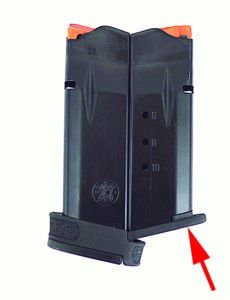
To disassemble the Bodyguard, clear the magazine and chamber, double check, and lock the slide to the rear. Push the ejector downward with a tool. If you use a digit, the slide may close on your finger. Ask us how we know. Once the ejector is pressed down, you may rotate the disassembly lever down and move the slide forward and off the frame. The recoil assembly and spring-guide rod are easily lifted out.
During the range test, we fired 160 cartridges in each handgun during the combat phase plus the accuracy phase. We fired 50 Speer Lawman 95-grain cartridges, 50 of the same type from Winchester, 20 Hornady 90-grain XTP, 20 Black Hills Ammunition Honey Badger 60-grain rounds and 20 G9 70-grain solid-copper loads. We drew the Smith & Wesson from pocket carry using a Ruger fabric holster and from strong-side and crossdraw, alternately, using a Galco TuckNGo inside-the-waistband holster. We preferred the Galco IWB because it offers the best balance of speed and retention.
The Bodyguard 2.0 is fast on the draw and fast on target. We were able to get center hits easily at 7 yards, if not as quickly and easily as with a compact 9mm pistol. The Bodyguard 2.0 gets on target quickly for its size, and we feel the gap between this pistol and a compact 9mm in shooting performance would narrow for those who practice. One rater drifted his shots to the left because he felt the rear notch was too wide and allowed the shots to stray at the 10-yard combat line. He adapted. It may have been his grip. We also fired a full magazine with at a target with six bullseyes at 5 yards, alternating the two magazines with 10 and 12 rounds to determine if the extended magazine helped shoot more accurately.
We fired as quickly as possible, taking time to recover the sights between shots. As it turned out, the difference was noteworthy, with greater control evident with the extended magazine. While the shorter magazine is more concealable, the gun is tiny, and perhaps the extended magazine is the better choice, if possible. The Smith & Wesson turned in good groups for such a small pistol.
During the firing test, the Smith & Wesson Bodyguard 2.0 suffered a single malfunction. A Black Hills Honey Badger caught on the feed ramp. There is a chance the shooter bumped the slide lock or slide during firing, but it appeared to be a feedway jam. Otherwise, we fired 159 rounds without a malfunction. We may write this off as a break-in malfunction, but it was one that the Ruger did not experience. Later in testing, another rater laid his thumb on the S&W slide lock, and the pistol did not lock back on the last shot. We lean toward that being shooter error during acclimation as the cause of this misfeed.
Firing for accuracy at 15 yards, we noted that all-copper bullets were not as accurate as the other loads. This would not have an impact on accuracy at 7 yards, particularly if you prefer Honey Badgers, but at 15 yards, the spreads became evident. Results are far better than with mini revolvers or derringers, and most raters agreed the pistols are easier to use well than a short-barrel revolver. Recoil wasn’t a problem, and we found the Bodyguard was quite a docile pistol.
From the bench, we fired Hornady XTP 90-grain XTPs, Speer Lawman 95-grain FMJs, and SIG Sauer 90-grain V-Crown JHPs. We felt that a 4.0-inch average group size at 15 yards would be excellent for this size of pistol, but larger groups would be unacceptable. Anything smaller than 4 inches would be a bonus. The pistol turned in 3.8-inch groups or smaller with two of the loads. The worst of the three, the SIG 365 90-grain JHPs landed five shots into 3.8-inch groups. The Speer Lawman 95-grain FMJ turned in a neat 3.2-inch average group, bettering the Hornady American Gunner by 0.2 inch in average group size. The Ruger LCP Max did not do quite as well in combat shooting or in absolute accuracy.
Our Team Said: In the end, we could not rate the Bodyguard 2.0 pistol down on accuracy because it is in line with other handguns in the class and actually better than some similar handguns. There was some discussion of the wide rear-sight notch, but because the raters were split, we did not rate the pistol down on that count. We also did not rate the pistol down a half grade on sight regulation, but we do note the sights made us send bullets strongly to the left. But that’s why you sight in your pistol before you need to use it.
| 380 AUTO RANGE DATA | ||
|---|---|---|
| Hornady American Gunner 90-grain XTP 90104 | Ruger LCP Max 75th Anniversary | Smith & Wesson Bodyguard 2.0 |
| Average Velocity | 888 fps | 894 fps |
| Muzzle Energy | 158 ft.-lbs. | 160 ft.-lbs. |
| Small Group | 2.8 in. | 2.6 in. |
| Average Group | 3.7 in. | 3.4 in. |
| Speer Lawman 95-grain FMJ 53608 | Ruger LCP Max 75th Anniversary | Smith & Wesson Bodyguard 2.0 |
| Average Velocity | 901 fps | 876 fps |
| Muzzle Energy | 171 ft.-lbs. | 162 ft.-lbs. |
| Small Group | 3.2 in. | 2.2 in. |
| Average Group | 3.7 in. | 3.2 in. |
| SIG 365 V-Crown 90-grain JHP E380A1-365 | Ruger LCP Max 75th Anniversary | Smith & Wesson Bodyguard 2.0 |
| Average Velocity | 867 fps | 881 fps |
| Muzzle Energy | 150 ft.-lbs. | 155 ft.-lbs. |
| Small Group | 3.6 in. | 3.3 in. |
| Average Group | 4.3 in. | 3.8 in. |
We fired groups at 15 yards from a bench using an MTM Case-Gard K-Zone Pistol Rest. We measured velocities with a Competition Electronics Pro Chrony. The first screen of the chronograph was 10 feet from the muzzles. JHP = jacketed hollow point. FMJ = full metal jacket. XTP = eXtreme Terminal Performance jacketed hollow point.
Written and photographed by Bob Campbell, using evaluations from Gun Tests Team members. GT



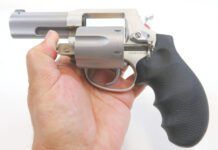
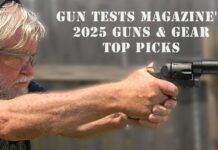
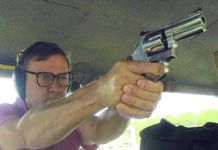
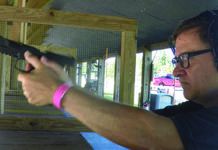
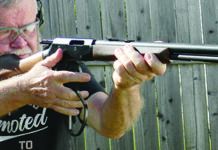
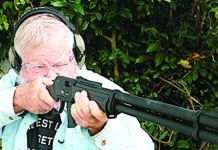
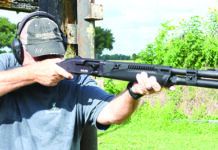
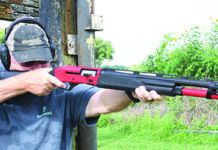
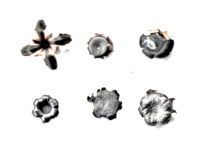
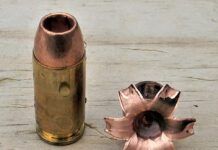

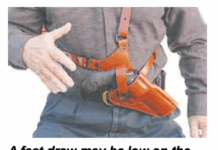
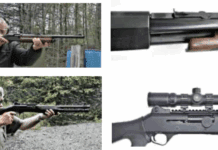
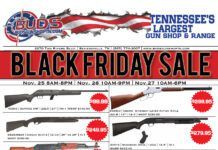
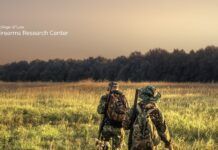


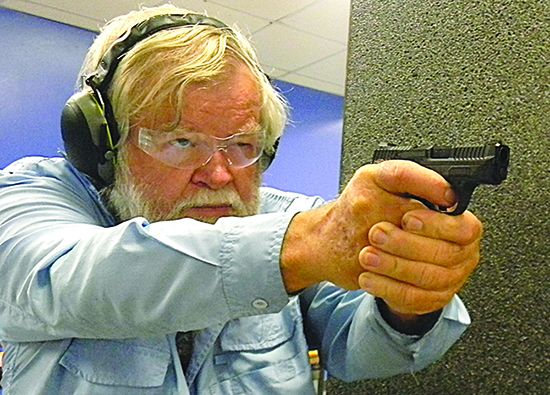

Great review of the S&W Bodyguard 2.0 380. I rented this pistol at the range and was so impressed with how well it shot and fit in my hand. It did jam several time, I blamed that on how dirty the pistol was, I sprayed some cleaner on it and fired 100 rounds without a problem. I did buy one and have fired 900 rounds without a problem. The issues I have are the wide rear site and not able to load more than 9 rounds even with a speedloader. I carry it every day in a sticky holster in my front pants pocket.
Good review of the S&W Bodyguard 2.0 380. I already have a 1st Gen Bodyguard that I customized with a CT green laser, TruGlo TFX Pro sights, and a Trigger kit. Shoots extremely well with Hornady Critical Defense but still wasn’t quite satisfied with the trigger. Tried the trigger on the 2.0, and liked it much better so I bought one. I have been disappointed with the results. It shot 6″ left of center of mass at 7 yards. Had another experienced pistolsmith try it, with same results. Tried to adjust rear sight and it would NOT budge, even with a proper fitting sight adjustment tool. Tried to adjust front sight to compensate, but it was hanging off the slide to the point that it fell off while test firing. This apparently is a common problem with this pistol, as further research from the S&W and other forums users have posted. I have ordered aftermarket replacement sights to try on this pistol; if the issue still persists I will pass it on to someone else